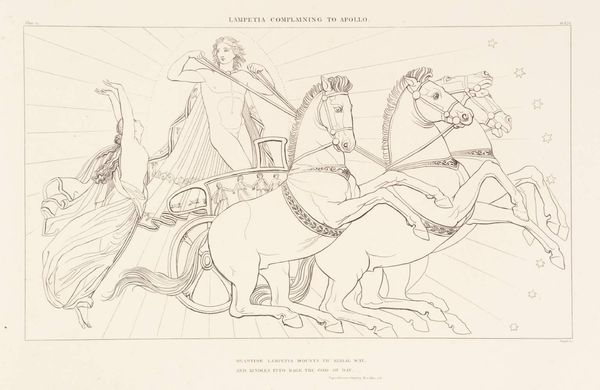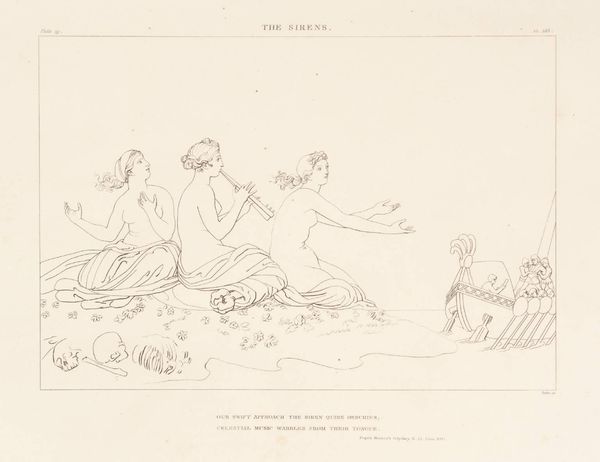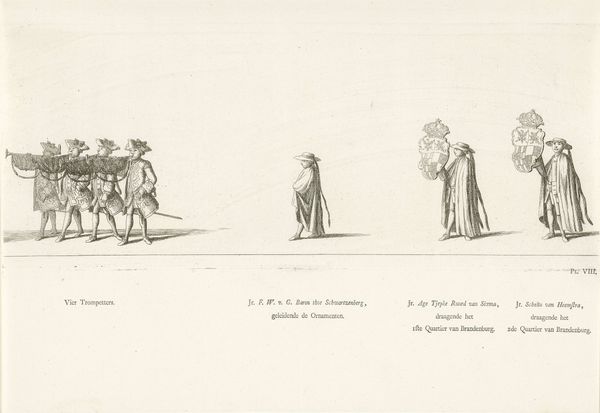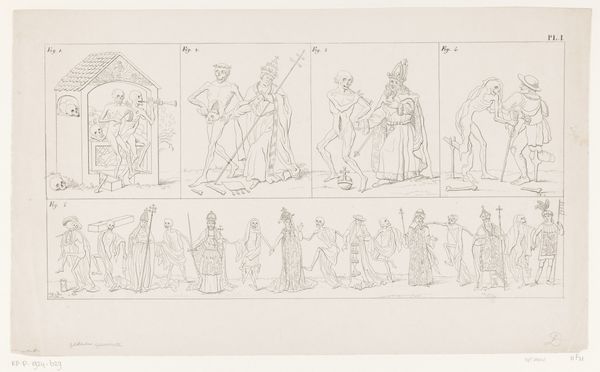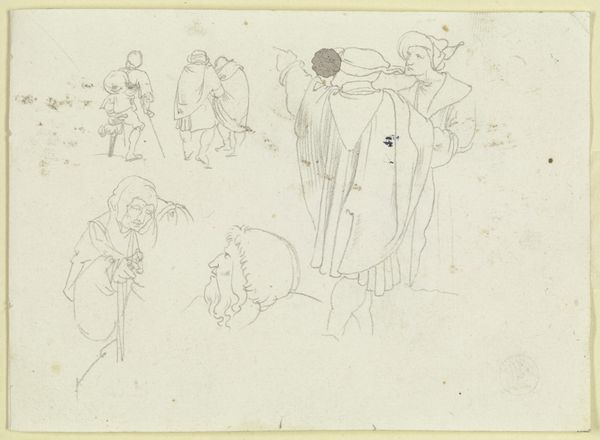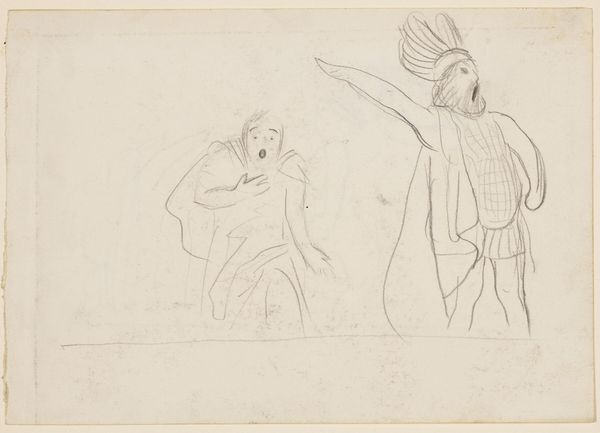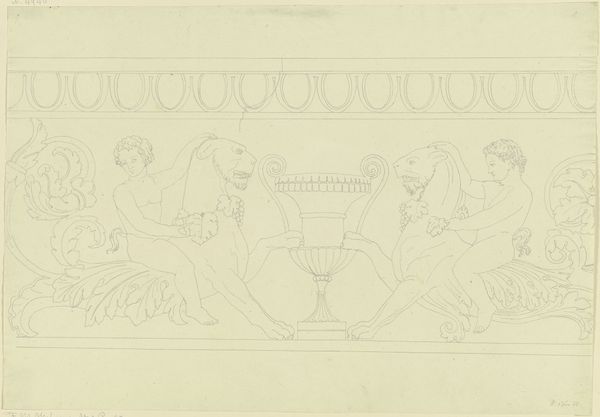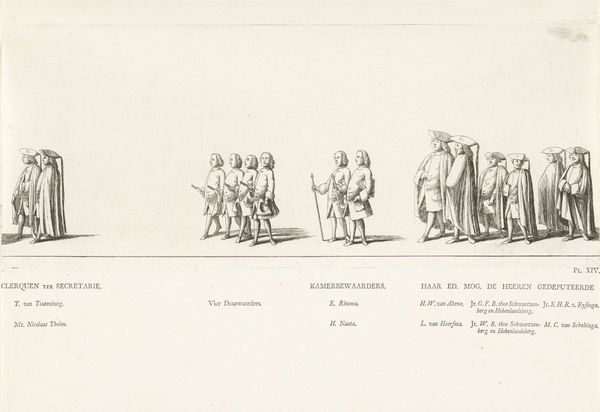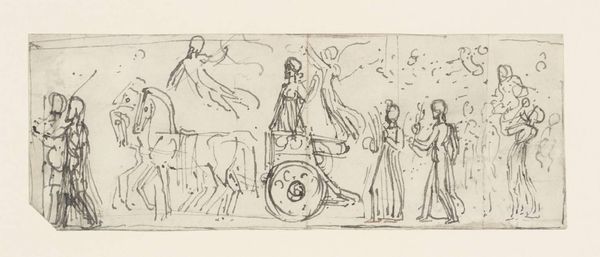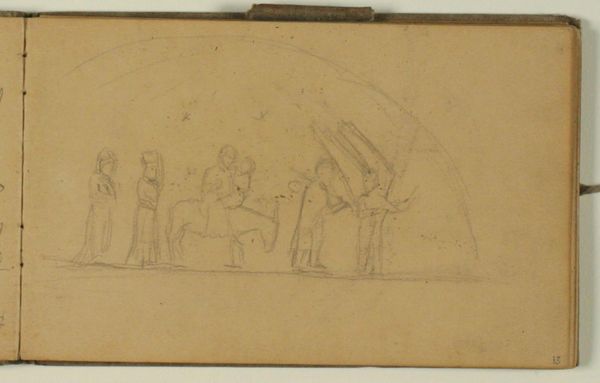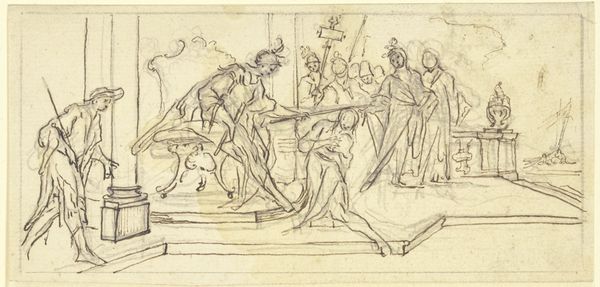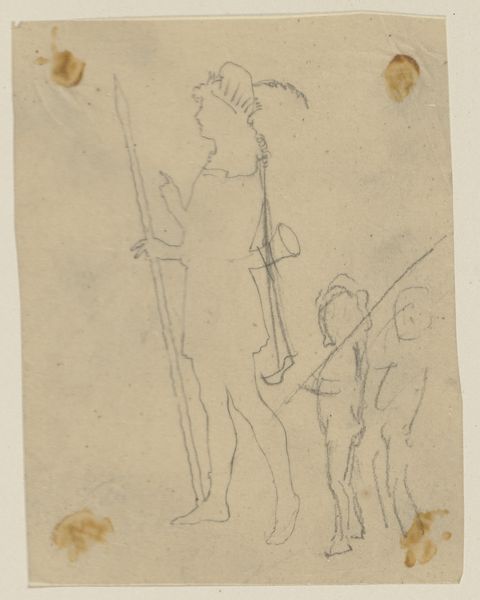
Dimensions: image: 175 x 299 mm
Copyright: CC-BY-NC-ND 4.0 DEED, Photo: Tate
Editor: This drawing, "Ulysses Departing from Lacedaemon for Ithaca, with his Bride Penelope" by John Flaxman, presents a scene of departure. The spare lines and classical references give it a solemn, almost austere mood. What can you tell me about how Flaxman's historical context might have influenced this work? Curator: Flaxman was deeply engaged in the neoclassical movement. His art reflects the era's fascination with ancient Greece and Rome, seeking to revive their artistic principles. How might the political climate of Flaxman's time, with its revolutions and shifting power structures, contribute to the focus on the narratives of heroes like Ulysses? Editor: Perhaps there's a longing for stability and heroism reflected in these classical themes, given the turbulent times? Curator: Precisely. The public role of art during that period was to instill virtue and provide moral guidance, and Flaxman adeptly navigates that space here. I think the work's starkness emphasizes its focus on moral rectitude and duty, important values during a time of upheaval. Editor: I see how the historical context adds another layer of understanding to the image. Curator: Indeed, it transforms a simple departure scene into a comment on leadership, responsibility, and societal expectations.
